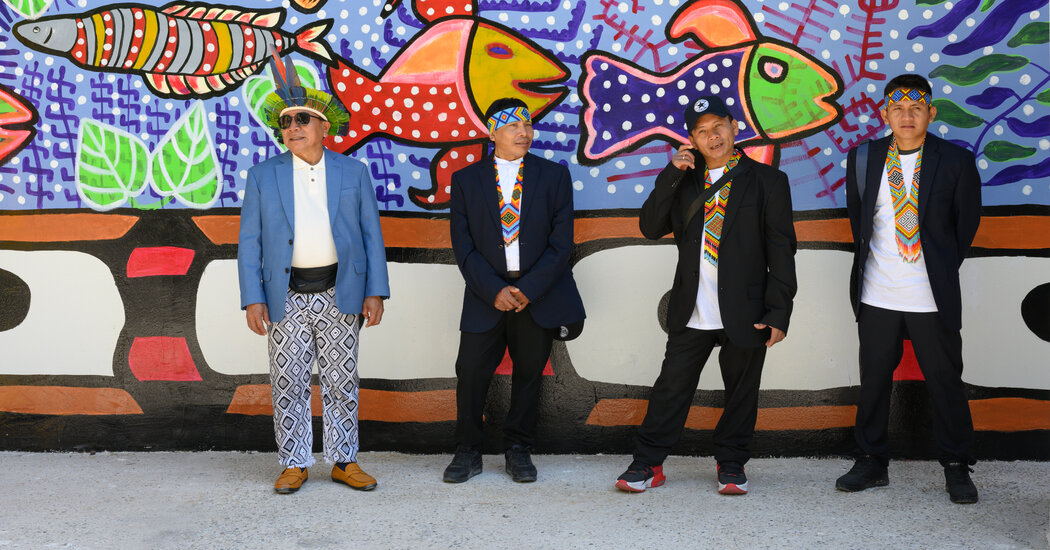
After the Venice Biennale, the members of MAHKU are taking their social mission to Miami Art Basel.
As Cleiber Bane began to sing, he looked up at the purple, red and yellow fish painted along the wooden slats of his home in the Brazilian Amazon. Colorful crabs and birds, as well as an Indigenous man wearing a blue and red feathered headdress, flanked the aquatic creatures, while geometric shapes outlined in black covered the shutters.
The images, seen during a video call, were a representation of the words that tumbled from his mouth in a low grumble, a centuries-old spiritual song called “The Light of Underwater Visions.” It’s one of the many sacred chants and myths that he and the other members of MAHKU, a group of Huni Kuin Indigenous artists, depict in their paintings as they retell their oral history in a medium they hope will endure and help preserve their culture.
“It’s so we don’t forget,” said Bane, whose father, Ibã Sales, first conceptualized MAHKU (for Movimento dos Artistas Huni Kuin). “So that, in the future, our young people don’t lose their identity.”
In just over 10 years, this movement of artists — they make it clear they aren’t a collective, but individuals working toward the same goal — have become a staple in contemporary Indigenous art in Brazil. They have shown their work at the São Paulo Museum of Art (known as MASP), the 2023 São Paulo Biennale and the Carmo Johnson Projects gallery. (Currently there are eight artists in MAKHU, but the group fluctuates.)
They have also stepped out internationally, showing at the Fondation Cartier in Paris in 2022, and, this week, at Art Basel Miami Beach. Earlier this year, they took on an intricate 2,460-foot mural at the Venice Biennale of the “Alligator Bridge” myth, a story about the intercontinental separation of peoples and the consolidation of the Huni Kuin identity, which they have said acts as “a central image in strengthening ties between foreigners around the world and the role of art as a means of resistance.”
This post was originally published on this site be sure to check out more of their content





